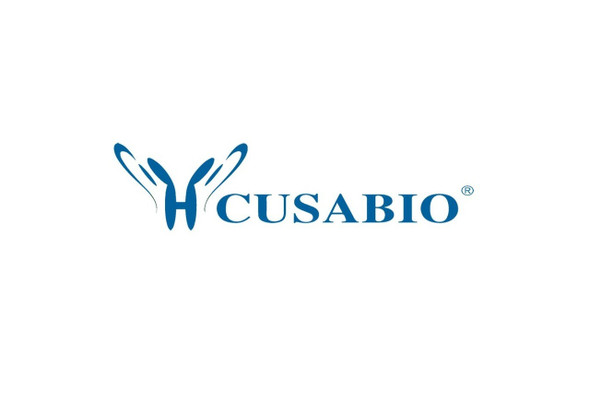Cusabio Polyclonal Antibodies
Phospho-PTEN (Ser370) Antibody | CSB-PA148620
- SKU:
- CSB-PA148620
- Availability:
- 3 to 7 Working Days
- Size:
- 100ul
Description
Phospho-PTEN (Ser370) Antibody | CSB-PA148620 | Cusabio
Phospho-PTEN (Ser370) Antibody is Available at Gentaur Genprice with the fastest delivery.
Online Order Payment is possible or send quotation to info@gentaur.com.
Product Type: Polyclonal Antibody
Target Names: PTEN
Aliases: BZS; DEC; GLM2; MHAM; TEP1
Background:
Tumor suppressor. Acts as a dual-specificity protein phosphatase, dephosphorylating tyrosine-, serine- and threonine-phosphorylated proteins. Also acts as a lipid phosphatase, removing the phosphate in the D3 position of the inositol ring from phosphatidylinositol 3, 4, 5-trisphosphate, phosphatidylinositol 3, 4-diphosphate, phosphatidylinositol 3-phosphate and inositol 1, 3, 4, 5-tetrakisphosphate with order of substrate preference in vitro PtdIns (3, 4, 5) P3 > PtdIns (3, 4) P2 > PtdIns3P > Ins (1, 3, 4, 5) P4. The lipid phosphatase activity is critical for its tumor suppressor function. Antagonizes the PI3K-AKT/PKB signaling pathway by dephosphorylating phosphoinositides and thereby modulating cell cycle progression and cell survival. The unphosphorylated form cooperates with AIP1 to suppress AKT1 activation. Dephosphorylates tyrosine-phosphorylated focal adhesion kinase and inhibits cell migration and integrin-mediated cell spreading and focal adhesion formation. Plays a role as a key modulator of the AKT-mTOR signaling pathway controlling the tempo of the process of newborn neurons integration during adult neurogenesis, including correct neuron positioning, dendritic development and synapse formation. May be a negative regulator of insulin signaling and glucose metabolism in adipose tissue. The nuclear monoubiquitinated form possesses greater apoptotic potential, whereas the cytoplasmic nonubiquitinated form induces less tumor suppressive ability.
Myers M.P., Pass I., Batty I.H., Van der Kaay J., Stolarov J.P., Hemmings B.A., Wigler M.H., Downes C.P., Tonks N.K.Proc. Natl. Acad. Sci. U.S.A. 95:13513-13518 (1998)
Song M.S., Salmena L., Carracedo A., Egia A., Lo-Coco F., Teruya-Feldstein J., Pandolfi P.P.Nature 455:813-817 (2008)
Scala S., Bruni P., Lo Muzio L., Mignogna M., Viglietto G., Fusco A.Int. J. Oncol. 13:665-668 (1998)
Isotype: IgG
Conjugate: Non-conjugated
Clonality: Polyclonal
Uniport ID: P60484
Host Species: Rabbit
Species Reactivity: Human, Mouse, Rat
Immunogen: Peptide sequence around phosphorylation site of serine 370 (D-V-S (p) -D-N) derived from Human PTEN.
Immunogen Species: Human
Applications: ELISA, WB, IHC, IF
Tested Applications: ELISA, WB, IHC, IF;WB:1:500-1:1000, IHC:1:50-1:100, IF:1:100-1:200
Purification Method: Antibodies were produced by immunizing rabbits with synthetic phosphopeptide and KLH conjugates. Antibodies were purified by affinity-chromatography using epitope-specific phosphopeptide. Non-phospho specific antibodies were removed by chromatogramphy using non-phosphopeptide.
Dilution Ratio1: ELISA:1:2000-1:10000
Dilution Ratio2: WB:1:500-1:1000
Dilution Ratio3: IHC:1:50-1:100
Dilution Ratio4: IF:1:100-1:200
Dilution Ratio5:
Dilution Ratio6:
Buffer: Supplied at 1.0mg/mL in phosphate buffered saline (without Mg2+ and Ca2+), pH 7.4, 150mM NaCl, 0.02% sodium azide and 50% glycerol.
Form: liquid
Storage: Upon receipt, store at -20°C or -80°C. Avoid repeated freeze.
Initial Research Areas: Cell Biology
Research Areas: Epigenetics & Nuclear Signaling;Cancer;Cell biology;Metabolism;Signal transduction






